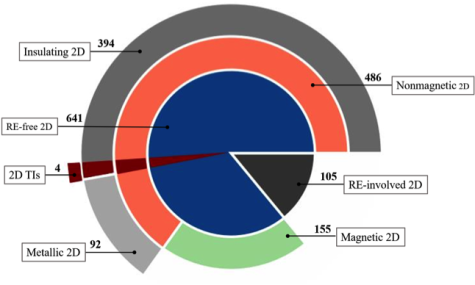High throughput design of 2D functional materials
The demand of minimization and feasibility of integration for future electronic devices makes two-dimensional (2D) materials remarkable in promising technological applications, whereas due to the breaking of translational symmetry, the 2D materials display distinct properties than the corresponding bulk materials thus they are fundamentally interesting. For instance, the development of single atomic-layer graphene discovered in 2004 opens an avenue for exploring 2D materials, which provide multiple of potential applications including electronics, spintronics, batteries and catalysts. 2D materials exhibit multiple electronic properties owing to different band gaps and electron behaviors. Moreover, from the chemical point of view, atoms in 2D materials are always exposed to outside which lead to high coefficient of atomic utilization. Therefore, chemical modification and charge transfer of 2D materials become much easier than those of bulk materials. Last but not least, the maturity of preparation methods (such as MBE and CVD growth) and development of analytic technique provide broad platform for synthesizing and modifying more 2D functional materials.
To date, many 2D materials have been synthesized and even more have been predicted, mostly based on analogous structure and chemical composition to existing 3D layered systems. On the other hand, accelerated discovery and exploration of novel materials is crucial for the global competitiveness in the 21st century. Early in 2011, the US federal government has launched the Materials Genome Initiative, aiming at developing and exploring materials design strategically based on theoretical calculations using the well developed density functional theory methods, to go beyond the conventional way of materials discovery based on try-and-error or empirical knowledge.
Starting from the 2D materials database (https://materialsweb.org/twodmaterials), we have performed high-throuput (HTP) calculations for 2D materials. We have classified 746 systems of 2D materials on electronic properties. Among them, four topological insulators have been verified. The HTP screening is carried out based on the automated construction of maximally localized Wannier functions followed by explicit calculations of the surface states, where the Wannier centers are evaluated as a further verification of the nontriviality. Further studies especially on magnetic 2D materials will be continued.





